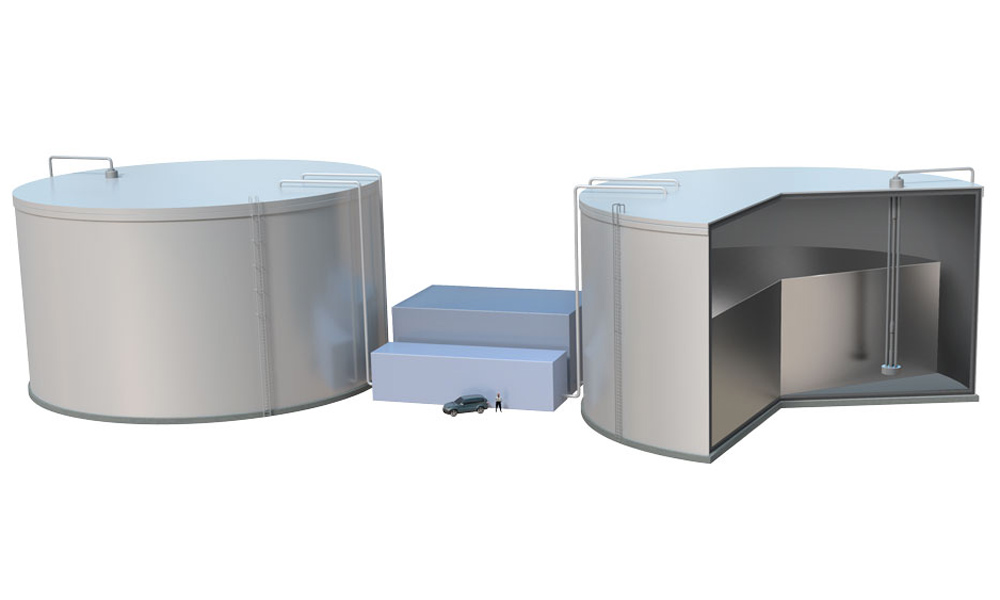While Elon Musk’s massive South Australian battery is proving its worth, engineers in the US are working on a conceptual design to store renewable energy more cheaply.
At $90.6 million, the world’s largest lithium ion battery was a significant investment. Although its owner, French renewables company Neoen, reported a healthy return of $23.9 million from a combination of network services and stored energy sales in June last year, revenue is expected to drop as more batteries come online.
As variable renewable energy such as wind and solar panels continue to claim a growing slice of the generation market, energy storage technology will be important to keep up with the demand for dispatchable power.
Researchers from MIT’s Department of Mechanical Engineering are working to reduce costs with a concept that stores excess renewable energy in tanks of molten silicon. When supply is scarce, the light from the white-hot silicon can be converted back into electricity and returned to the grid.
“We’re developing a new technology that, if successful, would solve this most important and critical problem in energy and climate change – namely, the storage problem,” said research author Associate Professor Asegun Henry in a media release.
The researchers claim that a storage system based on their design would be significantly cheaper than lithium ion battery storage and about half the cost of pumped hydro, which is considered to be the most economic existing storage technology. And unlike pumped hydro, it wouldn’t be dependent on a suitable slope and access to water.
From salt to silicon
Henry and his team recently published their research in Energy and Environmental Science. Their approach could achieve extremely low cost energy storage by keeping it as heat, but the tradeoff is in lower “round trip” efficiency when the heat is converted back into electrical energy.
This idea has already been put into practice in solar thermal technology, such as the 150 MW Aurora power station in South Australia, which is due to be online by 2020. This tech uses an array of mirrors, or heliostats, to focus the Sun’s heat energy and store it in a tank of molten salt. This heat can then be used to power a steam turbine to generate electricity on demand.

While molten salts such as sodium nitrate and potassium nitrate are economic and readily available, they have some drawbacks. After around three decades of operation, they can corrode storage tanks. This means the salt needs to be cooled and the tank emptied for repairs, which requires several months of downtime.
Solar thermal operates at around 1000ºF (537ºC). At higher temperatures, the corrosion process would be accelerated.
According to Henry, this constraint limits the ability of solar thermal generation to compete with gas-fired turbines, as higher temperatures could increase efficiency and reduce cost.
By replacing salt with silicon, the MIT system could weather temperatures more than 4000ºF (2204ºC). Last year, the researchers developed a pump able to operate in these conditions, which earned it a mark recognised by Guinness World Records as having the highest recorded heat tolerance in the world.
Coming in hot
The MIT storage solution is designed to use excess renewable electricity to power heating elements, rather than focussing sunlight on a receiving tower like solar thermal.
Their design incorporates two graphite tanks – one ‘cold’ and one ‘hot’ – connected by tubes containing heating elements. The cold tank stores silicon at 3500ºF (1926ºC), which is further heated to 4300ºF (2371ºC) as it flows into the second tank, where it glows white hot.
To return energy to the grid, the glowing-hot silicon is pumped into tubes and its light is converted into electricity by multi-junction photovoltaic solar cells. As it cools, it is returned to the cold tank for the cycle to begin again.
Although the researchers were concerned that the super-heated silicon would react with the graphite tank to produce silicon carbide, an experimental mini-tank showed that a thin layer of silicon carbide coated the inside of the tank and prevented further corrosion.
Henry said the researchers nicknamed their system ‘sun in a box’.
“It’s basically an extremely intense light source that’s all contained in a box that traps the heat,” he explained.
